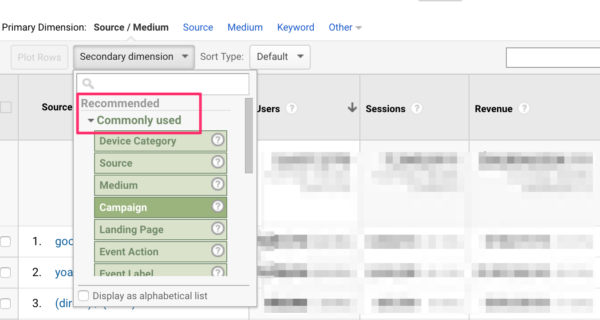Enhance Your Data Evaluation Making Use Of Additional Measurements
The true depth of understandings exists in the assimilation of second dimensions. The critical use of additional dimensions boosts analysis beyond the surface area level, assuring a riches of untapped possible waiting to be uncovered.
Comprehending Secondary Measurements
Secondary measurements in information analysis describe additional attributes or metrics that supply much deeper insights when incorporated with main data measurements, boosting the general understanding of the dataset. These additional measurements provide a more thorough sight of the information, permitting experts to discover concealed patterns, connections, and patterns that may not be obvious when just taking into consideration key measurements.
By including second measurements right into data evaluation, analysts can get a more nuanced understanding of the aspects influencing the main metrics. For instance, in advertising and marketing evaluation, main measurements can consist of standard customer demographics like age and gender, while secondary dimensions could include variables such as purchasing actions, choices, or geographic area. By integrating these additional and main dimensions, analysts can create much more comprehensive customer accounts, making it possible for more targeted and effective marketing strategies.
Furthermore, additional dimensions can assist in identifying connections in between different variables, resulting in more exact anticipating modeling and decision-making. They enable analysts to explore data from multiple perspectives, improving the understandings attracted from the dataset and inevitably boosting the high quality of analysis and critical referrals.
Advantages of Secondary Measurements
When considering information analysis, integrating secondary dimensions supplies a multitude of benefits that substantially improve the depth and breadth of understandings derived from main data measurements. By adding additional measurements such as time, area, or demographic info to the evaluation, scientists can obtain an extra detailed understanding of the main data points.
Furthermore, additional dimensions can likewise help in segmenting information, enabling an extra detailed evaluation of specific subsets within the primary information. This segmentation can bring about more targeted approaches and actions based upon the one-of-a-kind attributes of each section. Furthermore, second measurements can assist in confirming searchings for from primary data dimensions, giving a more reliable and durable basis for decision-making.
Fundamentally, the benefits of including secondary measurements right into data evaluation are vital, supplying richer understandings and allowing even more educated decision-making processes.
Carrying Out Additional Dimensions Successfully
When including additional dimensions, it is critical to straighten them with the key measurements to acquire much deeper insights right into the information. It is necessary to pick secondary measurements that match the primary information without causing noise or complication in the evaluation.
Additionally, think about the scalability of the second measurements throughout various datasets or analyses. Guarantee that the selected secondary dimensions can be continually used and analyzed across different scenarios to keep the integrity and consistency of the evaluation. Develop a systematic process for incorporating additional dimensions right into the evaluation process to improve the anonymous interpretation of outcomes. By carrying out second dimensions effectively, analysts can boost the depth and precision of their data evaluation, leading to more informed decision-making and workable understandings.
Advanced Techniques With Secondary Dimensions
For a more innovative approach to data analysis, integrating additional dimensions can dramatically raise the deepness of insights gotten. Advanced techniques with additional measurements involve more detailed methods to draw out beneficial information from data collections. One such technique is associate analysis, where information is fractional based upon certain attributes or habits to track patterns gradually. This approach permits for a much deeper understanding of exactly how different groups engage and progress with your service or product.
Another sophisticated method is regression analysis, which assists determine partnerships in between variables and how they affect each various other. By adding secondary dimensions, such as demographic details or individual habits, to regression designs, you can reveal much more nuanced understandings and make more exact forecasts.

Study: Additional Measurements at work

In visit homepage one more circumstance, a health care company leveraged secondary measurements to enhance resource allowance. By examining patient results in regard to geographical area, the organization determined areas with high readmission rates. This led to the application of targeted intervention programs in those regions, ultimately improving client care and reducing healthcare costs.
These study highlight the power of secondary measurements in uncovering useful understandings that drive critical decision-making. By delving deeper right into information evaluation past primary metrics, companies can gain an extra detailed understanding of their customers and procedures, resulting in even more enlightened and efficient organization techniques.
Verdict
To conclude, the consolidation of second dimensions in information analysis is important for obtaining a comprehensive understanding of underlying fads and factors. By utilizing methods such as friend analysis and regression analysis, companies can discover hidden insights and make even more enlightened decisions. Secondary measurements include depth and breadth to information analysis, permitting organizations to check out information from numerous perspectives and drive more reliable outcomes.
In advertising and marketing analysis, key dimensions can include fundamental consumer demographics like age and gender, while second dimensions might include variables such as acquiring habits, choices, or geographical place.When thinking about information evaluation, integrating secondary measurements supplies a multitude of advantages that substantially improve the depth and breadth of understandings obtained from main information dimensions.In addition, second dimensions can also help in segmenting information, enabling for a much more comprehensive evaluation of specific subsets within the key information. Furthermore, secondary dimensions can assist in confirming searchings for from primary information measurements, offering an extra durable and reputable basis for decision-making.
When incorporating second measurements, it is critical to straighten them with the primary measurements to acquire much deeper insights right into the information.